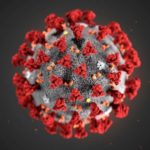 I’ve written a few columns now about shows resuming production, but a question that keeps coming up and will keep coming up is, “What happens if someone tests positive?” Some might assume that it means a production has to shut down again immediately, but that’s not necessarily true.
I’ve written a few columns now about shows resuming production, but a question that keeps coming up and will keep coming up is, “What happens if someone tests positive?” Some might assume that it means a production has to shut down again immediately, but that’s not necessarily true.
Since last week, there have been some great developments, most notably the fact that California-based Quantgene has opened its labs to offer 24-hour COVID testing turnaround to a few productions. Variety ran a great story about the company earlier this week.
If you’re booked on one of the shows starting or resuming production over the next couple months, you may already know about how COVID testing is being used to keep everyone safe and COVID-free. If you live in the New York or New Jersey areas, you will already have heard a lot about testing and tracing, but maybe not so much in other areas. During my downtime over the past few months, I decided to take the Johns Hopkins contact tracing course to possibly help out in that field, but also just to be more informed and knowledgable about the spread of COVID in the entertainment business.
This is how tracing works in a simplified form: If someone tests positive for COVID, they’re notified of such. In a perfect world, they will be called by a contact tracer to find out a.) How they’re doing; b.) What symptoms they’ve had (if any) and when they started; c.) Who they’ve been in contact with or where they’ve been during their most infectious period; and d.) the tracer will offer any assistance needed in terms of resources including a place to isolate, if necessary.
All of these steps are important, the first two because if someone has tested positive for COVID, they need to know right away. They may also need to know whether or not they should immediately go to the ER if certain more serious symptoms show up. More importantly, they need to know how long to isolate and for how long. The third question is also crucial, because the whole point of having a contct contact tracing program is to prevent the further spread of COVID.
Chances are you’ve heard about some of the more serious effect of COVID, but it’s very much a virus that affects different people differently. It’s also a virus that can can be spread more by those already showing symptoms than the “asymptomatic” cases, which make up somewhere around 20% of those who test positive. Of course, on any show, they’ll want to make sure to catch any cases of COVID preemptively before they become infectious to avoid a outbreak that would indeed shut down a show.
In theory, every show should consider having someone involved in just the testing and tracing, almost like a liaison who can relay information to and from the regional health department as needed. That way, if someone on the cast or crew of a production tests positive, they can help and protect them while also figuring out how to contain the spread. At the same time, such a production liaison can help the outside tracers figure out who else may have gotten infected.
This gets a little tricky because as you may know if you’ve ever visited a doctor or hospital, there are certain things considered confidential between doctors, nurses and the patient. The same is true with the Dept of Health and contact tracing, so any production-based liaison would only be able to help the outside contact tracer get in touch with someone who may have had had contact. Since everyone on the cast and crew would have been tested, there’s a good chance that the local Dept. of Health will already have a way to contact them but when it comes to a busy movie or TV set where phones are kept on silent.
Without having spoken to anyone at Tyler Perry Studios, I’m not sure if tracing is something that’s been implemented into its own game plan, but it makes sense to have one person who can handle any contact and communication with the Health Department. Some things obviously can’t be done in this way, but it would make sense for any production that is testing everyone involved to have one person who is able to get anyone who tests positive the support and isolation they need without disrupting production. Fortunately, a lot of the early plans and protocols often include an on-set doctor and/or nurse who could take on this role to avoid spread.
Clearly, COVID is one of the most complicated situations productions have faced outside natural disasters, fires, etc, but there’s no reason why productions can’t start up again safely even within areas that are having upswings in COVID cases. This is where proper testing with quick results as well as tracing come into effect.
COVID testing, including rapid results, is critical to getting shows up and running, but knowing how to use the tracking and tracing, especially if someone happens to test positive for COVID, offers more assurance that a show won’t come crashing down if a test does come back positive.
Email me at [email protected] if you want to add to this conversation, and I’ll be back on Tuesday with the next “Back to Work” installment.





